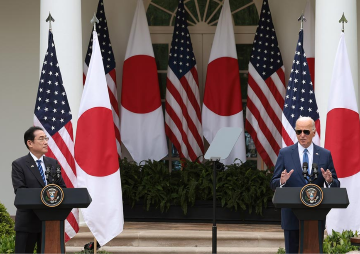
The evolution and expansion of India’s building stock has a critical role to play in its battle against climate change. Accounting for more than 40 percent of the country’s total energy consumption, energy use from buildings is increasing at 8 percent annually. If conventional inefficient building practices continue, buildings would account for over 70 percent of emissions by 2050, thus posing a major threat to India’s green ambitions.
According to the International Finance Corporation (IFC), 70 percent of the buildings required by 2030 are yet to be constructed in India. If India were to embrace the concept of green buildings to meet this huge demand, it would be a win-win for the environment and the economy. The green buildings market in India is currently at a nascent stage of development, with only 5% buildings being classified as green. While this might come across as a challenge at the outset, it does open up a wide array of opportunities for the development of green buildings.
If India were to embrace the concept of green buildings to meet this huge demand, it would be a win-win for the environment and the economy.
The case for green buildings
There are several reasons supporting the case for green buildings in India. The first, and perhaps the most obvious one, pertains to their impact on the environment — on energy demand in particular. Green buildings have lower energy costs as compared to conventional buildings. Although the initial construction and design costs are higher, they are offset in the long run by reduced maintenance costs and lower utility bills. A case in point is the CII Godrej green business centre, whose building cost was 18 percent more than that of a conventional building at the time of construction. However, the building’s costs were recovered within a short period of seven years. Similarly, Spectral Services Consultants’ office in Noida, built with 8 percent higher cost, gave a payback in four years. There is, thus, an urgent need to generate awareness around the fact that sustainable is affordable and bust the myth that “building green” is “costly.”
Given the pandemic and its aftershocks, the appeal of green buildings has increased for the occupants of residential houses as well as workspaces. Post-Covid, individuals are expected to become all the more cautious about their health, well-being and comfort, and would want to live in buildings that have a better ventilation system, ample daylight and fresh water availability. According to the World Health Organisation (WHO), respiratory and lung diseases associated with poor indoor environment quality are three of the top five causes of death. The features of green buildings have proven to have a positive impact on health and well-being. Green homes and offices optimise natural light in the construction design and limit the usage of artificial lighting. Research shows that natural daylight helps in reduction of stress levels, provides psychological comfort and increases employees’ productivity by approximately 15 percent in an office environment. Therefore, by investing in green designing and development, companies can ensure better returns on their most valued assets — employees.
Green homes and offices optimise natural light in the construction design and limit the usage of artificial lighting.
Another critical reason strengthening the case for green buildings in India is its role in catalysing India’s green economic recovery. Post-Covid, there has been a consensus to “build back better” and invest in those sectors of the economy that can generate jobs as well as fuel green growth. Green buildings provide an ideal avenue to support this goal.
Promoting green buildings: A role for governments and banks
The green construction sector in India currently lacks the technical expertise to execute projects and the funding to pay for construction. These remain the biggest barriers to building green, and require an entrepreneurial-regulatory state.
A number of government schemes have significant potential to provide an initial boost to the sector. The Pradhan Mantri Awas Yojana (PMAY) has been lauded for its potentially significant multiplier effects for the economy, including by providing an avenue for employment creation. If the scheme were to be pivoted towards building green, it would create even greater positive spillover effects for the economy. The PMAY and the Eco-Niwas Samhita, i.e., a green housing scheme, together can give a huge boost to the green residential buildings sector in the country.
The success of these pioneer state governments has begun incentivising green construction and encouraged other governments to emulate the same.
The Indian government has also provided for numerous initiatives like the Green Rating for Integrated Habitat Assessment (GRIHA) to promote green buildings. This system restricts the use of resources by 30 percent as the ultimate goal. Government has mandated for all central government and PSU buildings to get at least 3-star ratings under GRIHA.
At the state level, several state governments have promised an increased floor-to area ratio (FAR) for GRIHA projects, incentivising the developer to earn a greater profit by building green. For instance, the Andhra Pradesh government offers a 25 percent subsidy on the total fixed capital investment of green projects obtaining a green rating from the Indian Green Building Council (IGBC). Due to these incentives, states like Tamil Nadu and Maharashtra have been able to build the highest number of green buildings in the country, according to a US Green Building Council (USGBC) report. The success of these pioneer state governments has begun incentivising green construction and encouraged other governments to emulate the same. For instance, the Karnataka government has recently proposed to provide a series of incentives like reduction in property tax and stamp duty for building projects meeting certain green standards, following similar policies by Andhra Pradesh, Haryana, Punjab, West Bengal and Sikkim.
As per the Economic Survey of 2019-20, India requires an investment of US$ 1.4 trillion in the infrastructure space by 2024-25. In addition to government support, the banks can play a crucial role in facilitating investment for green buildings. Financing is a huge impediment in building green projects, as their initial cost of construction and design is high. Green projects require long-term investment, and banks can provide such investment by issuing green bonds to finance the construction of green buildings. In India, SBI, Yes Bank, Exim Bank, and Axis Bank are a few banks that issue green bonds.
Green projects require long-term investment, and banks can provide such investment by issuing green bonds to finance the construction of green buildings.
Banks can link home loan interest rates with the green ratings of buildings. They can also offer construction loans with lower interest rates to incentivise developers. To verify performance and ensure quality, India can come up with a subsidised insurance model (followed by some cities in China). Under this model, the developer would buy a green insurance policy before construction, promising to deliver quality and abide by the agreed performance standards. The bank could then issue green credit based on the insurance policy. The insurance company is then liable to pay or repair, if the promised standards are not met. For this model to be successful, the government needs to provide subsidies and to incentivise developers to buy these policies.
Conclusion
The construction industry is amongst India's fastest growing sectors, growing at a rate of 9.2 percent and contributing about 10 percent to the country's Gross Domestic Product (GDP). There is thus significant potential in residential construction, with the ‘Housing for All’ programme requiring 20 million urban and 10 million rural homes. Corporate sentiment is also buoyant, with many companies taking a “carbon neutral” pledge. Hence, there is a very strong business case to be made for green residential and commercial construction in India.
Given the ongoing recession, green buildings can become a strong driver of economic growth and the prerogative to “build back better,” by providing nine million skilled jobs in both the renewable and construction sector by 2030. The government, in collaboration with the banking sector, can together provide fuel to the green construction sector and help India achieve its potential in this regard.
The authors are research interns at ORF.
The views expressed above belong to the author(s). ORF research and analyses now available on Telegram! Click here to access our curated content — blogs, longforms and interviews.




 PREV
PREV

